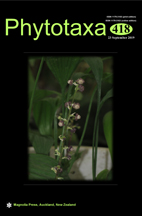Abstract
Bamboos of the Neotropical Chusquea subg. Swallenochloa are characteristic of high elevation grasslands from Mexico to Argentina and in Brazil, with a few species occurring in montane or other forests. The central Andean diversity of subg. Swallenochloa remains poorly studied, but recent field work revealed the existence of additional species diversity within sect. Swallenochloa of subg. Swallenochloa in Peru. We here present a preliminary revision of the eight named species of sect. Swallenochloa for Peru, including the description of two new endemic species, C. gamarrae and C. intipaqariy, and the resurrection of two other endemic species, C. simplicissima and C. weberbaueri, which were previously treated as synonyms of C. spicata, apparently another Peruvian endemic. This revision includes detailed descriptions (or re-descriptions) of the eight species of sect. Swallenochloa confirmed for Peru, morphological keys for their identification (vegetative vs. reproductive and vegetative), photographic images showing diagnostic features for all eight species, comparative tables and a distribution map. Previous identifications of some specimens are also discussed and, in some cases, modified, and a list of Incertae Sedis specimens from Peru with comments is included. A second-step lectotypification of the name C. weberbaueri is also proposed. The second collection of C. simplicissima, made 111 years after the type collection, is newly documented in this study. Two other species, C. smithii and C. weberbaueri, remain known only from their type collections, and the two newly described species are known from only a single population each, highlighting the need for additional field work and herbarium study of this ecologically important group.

